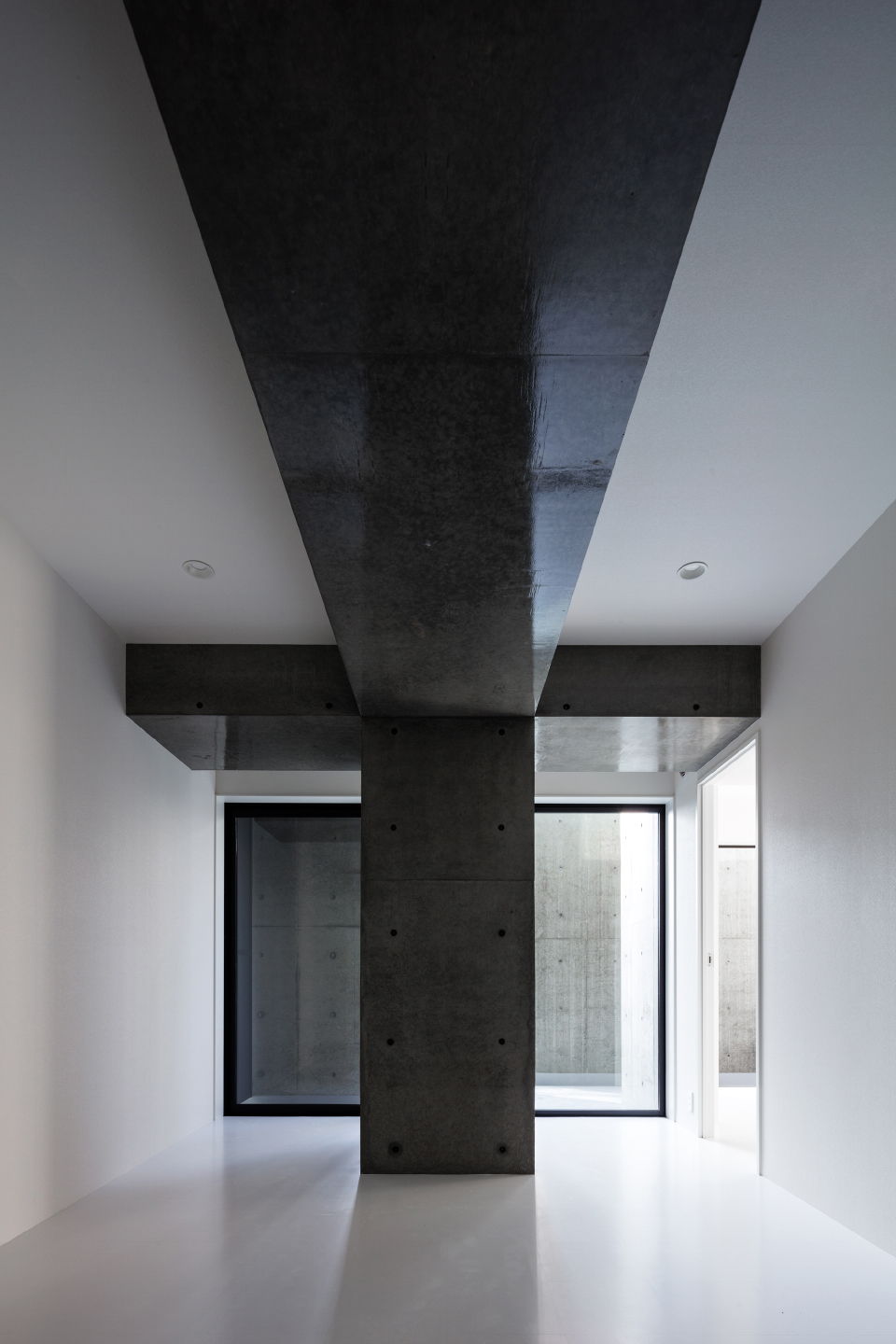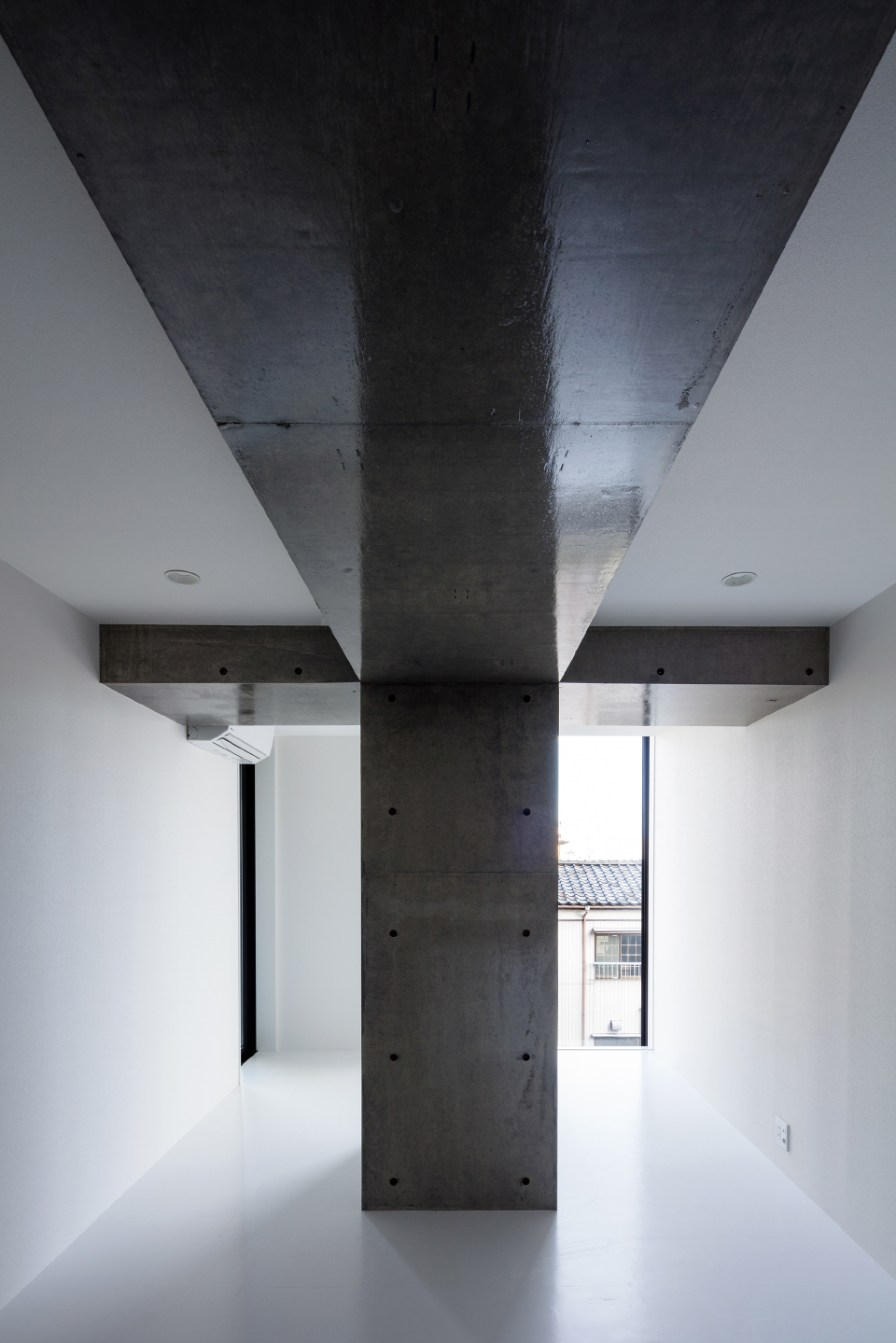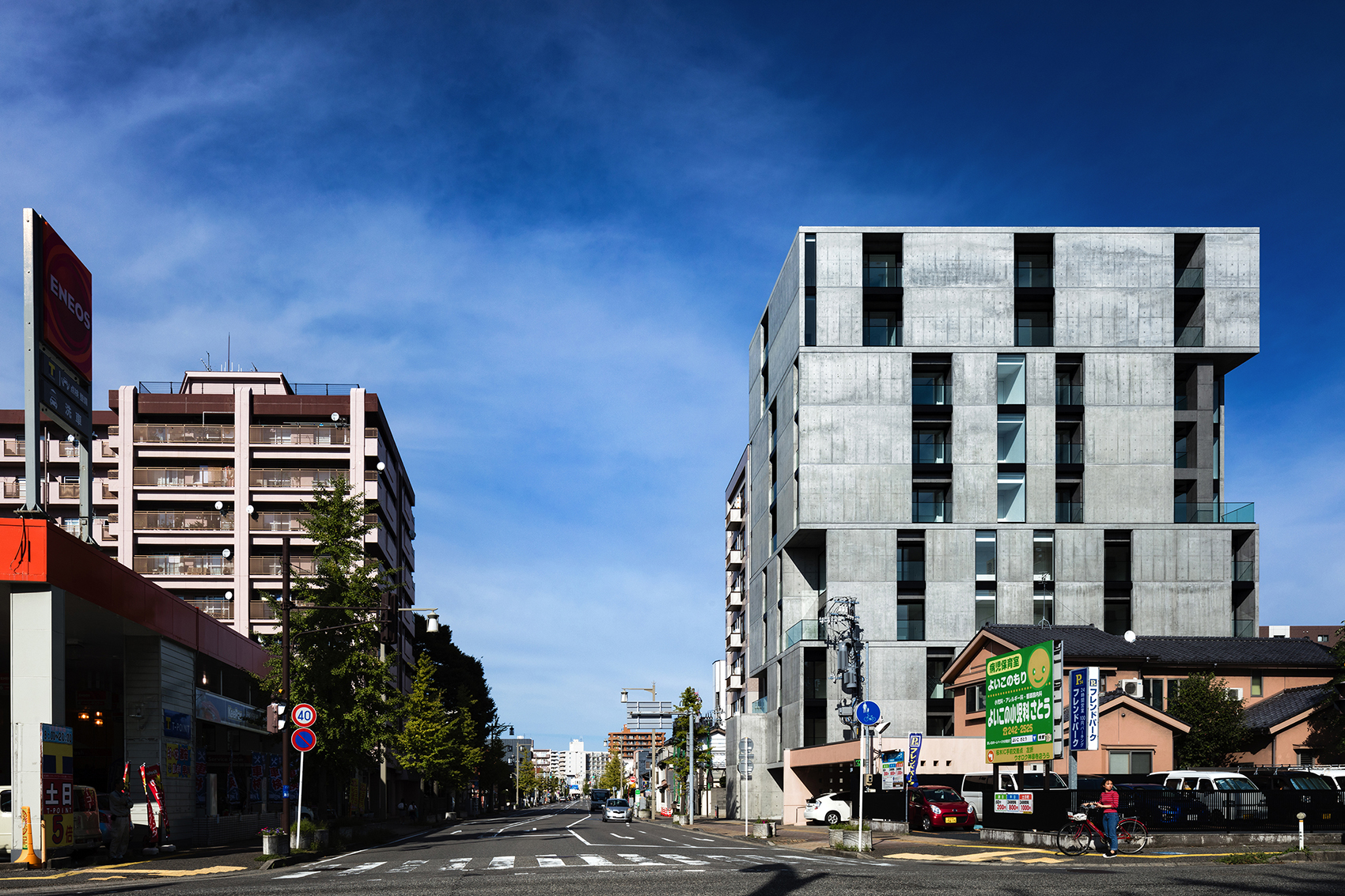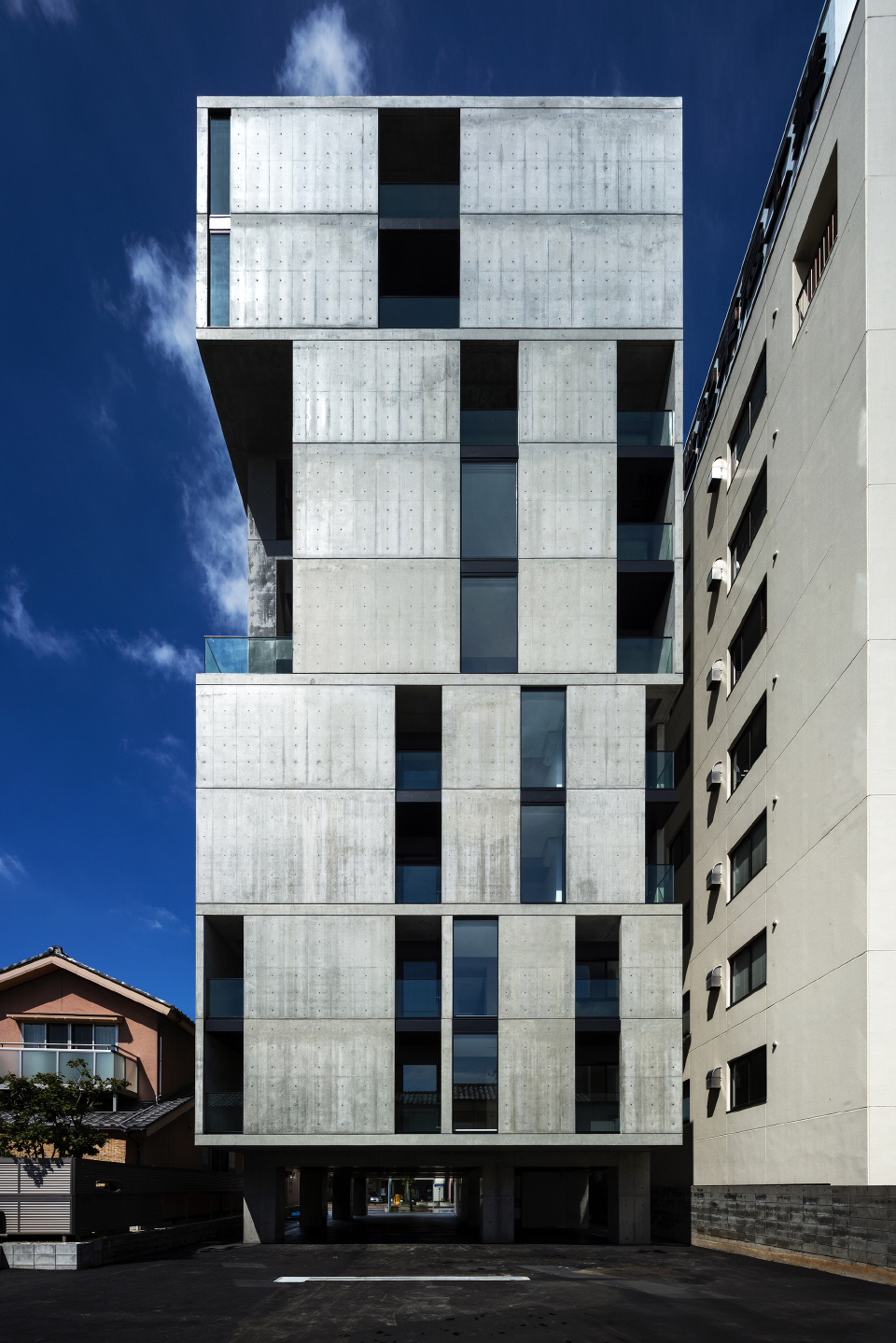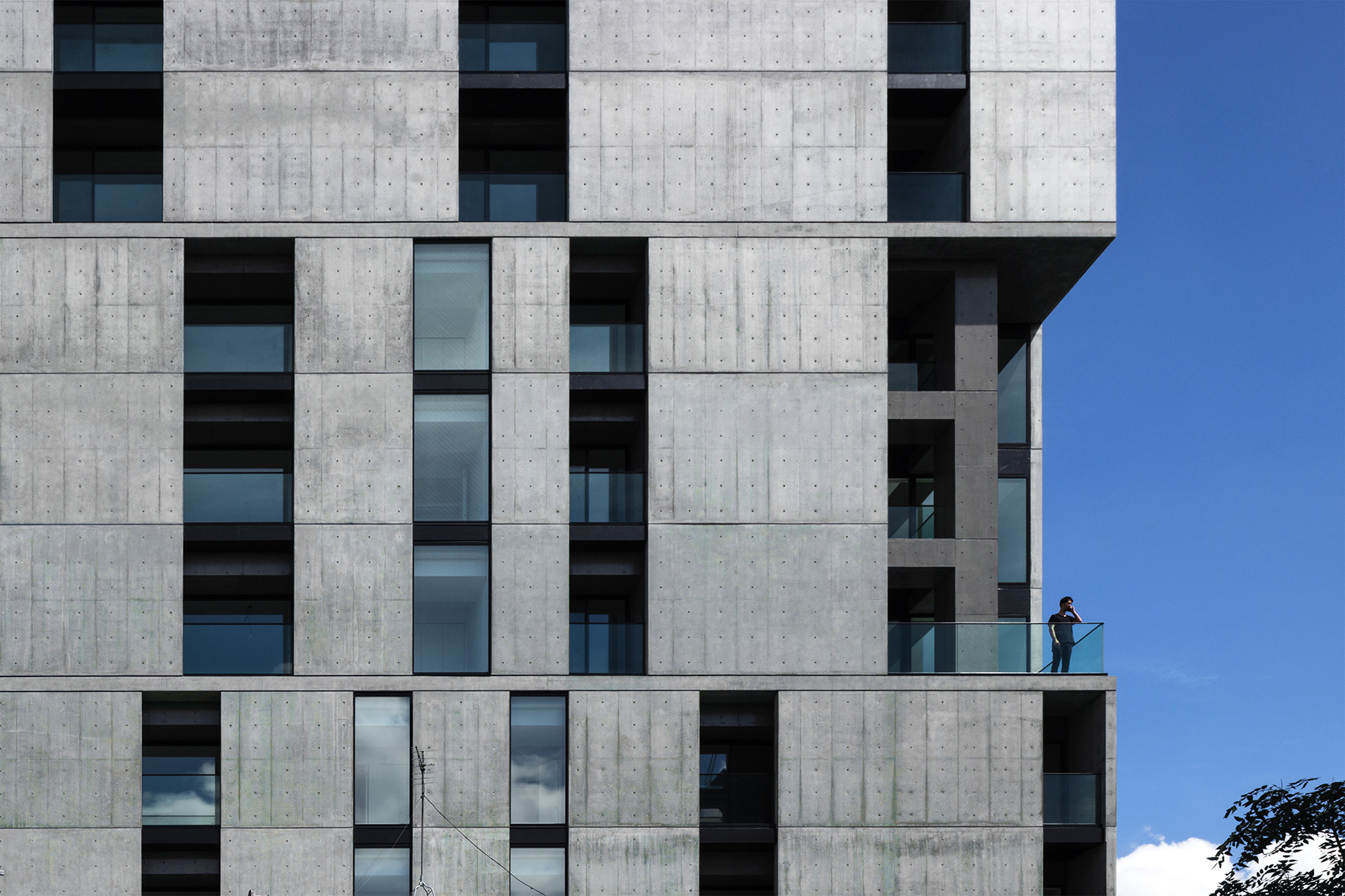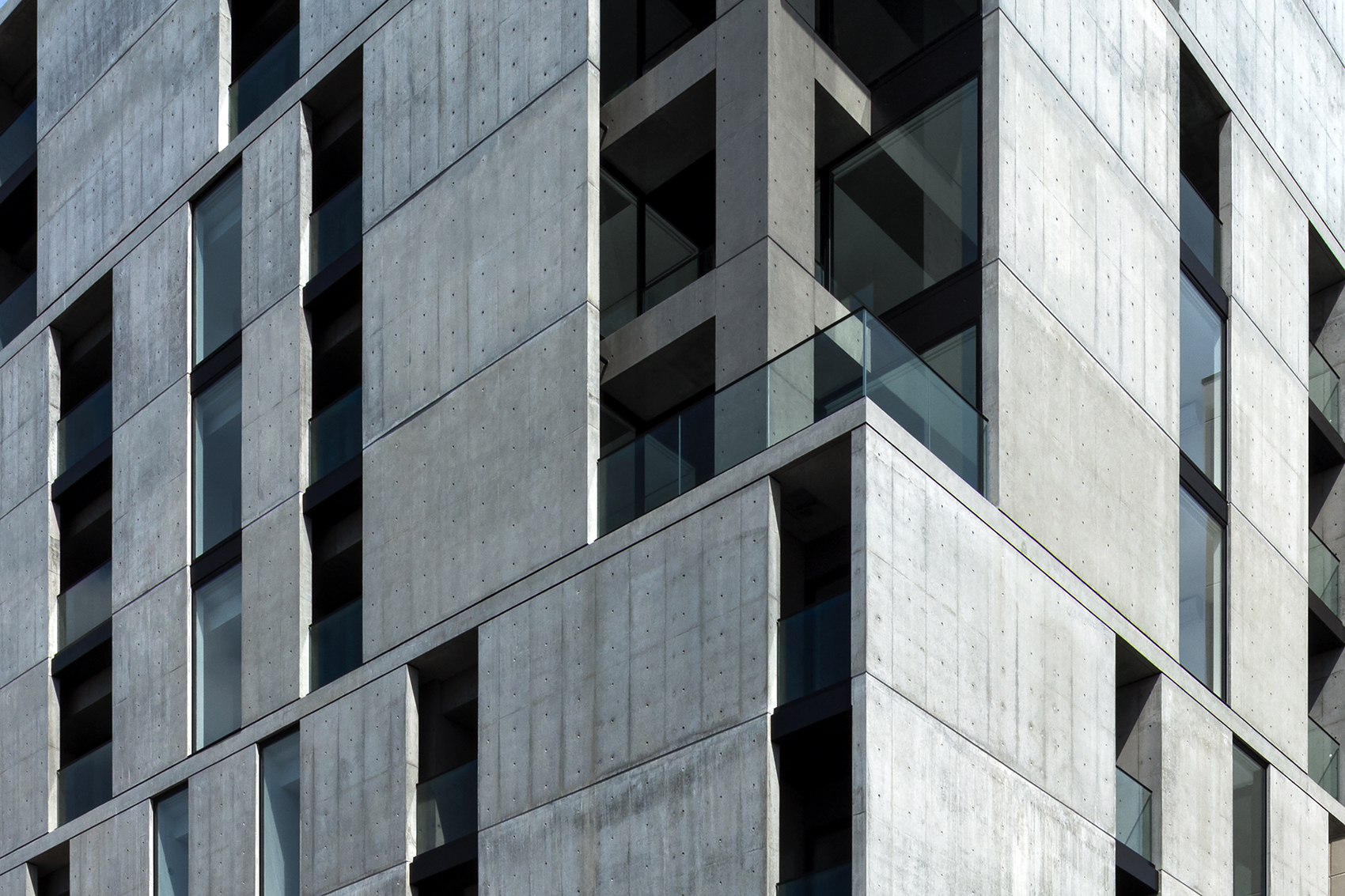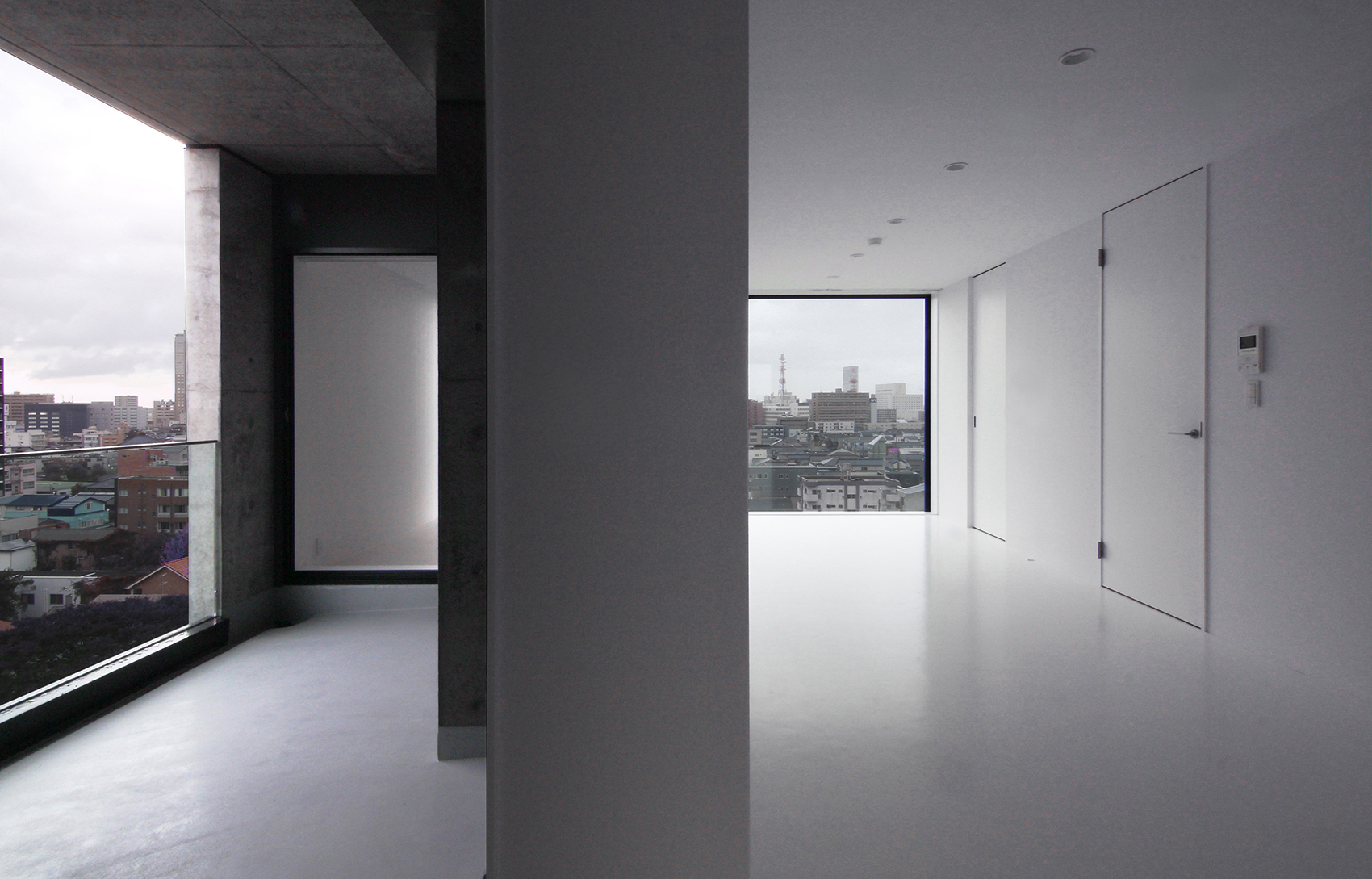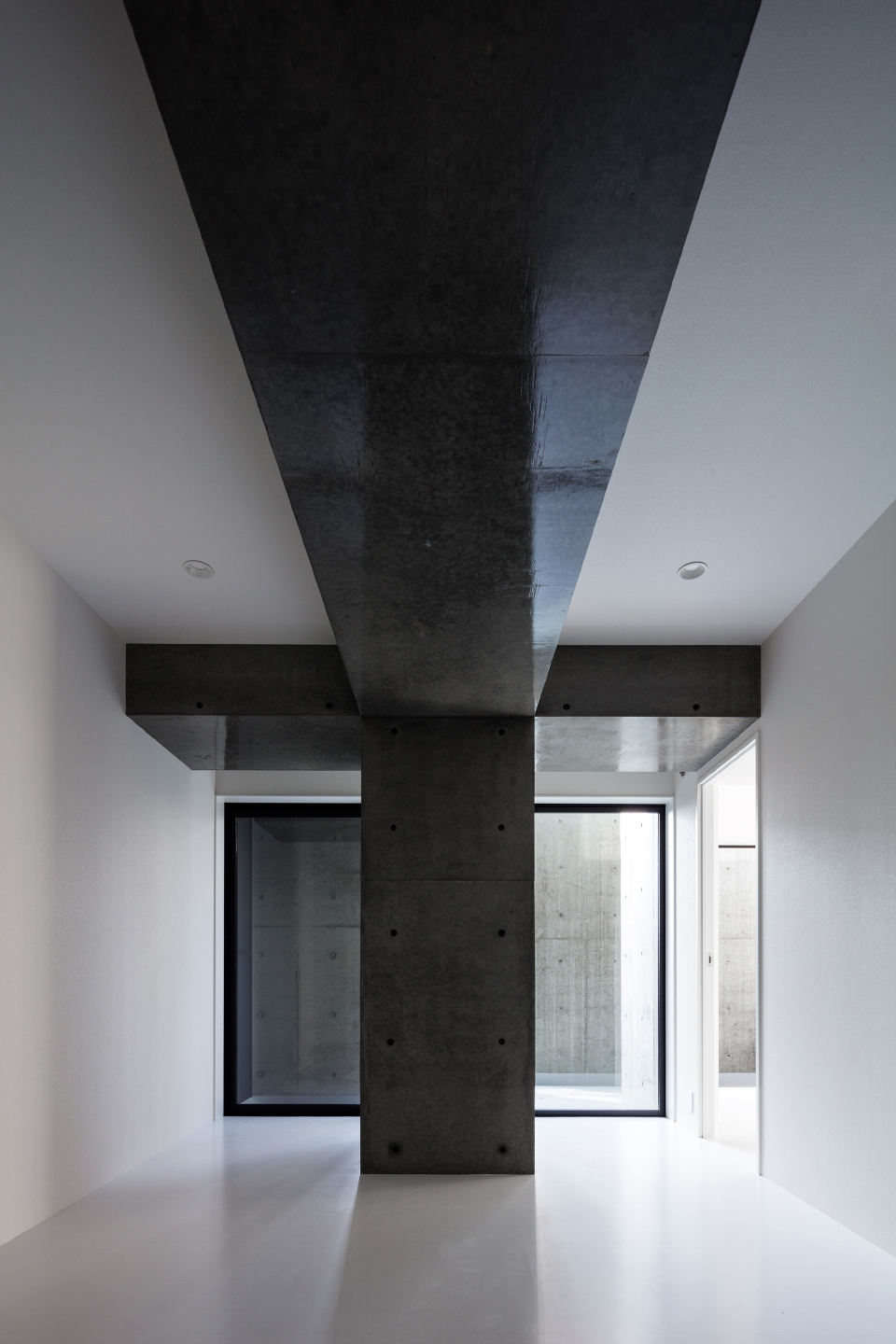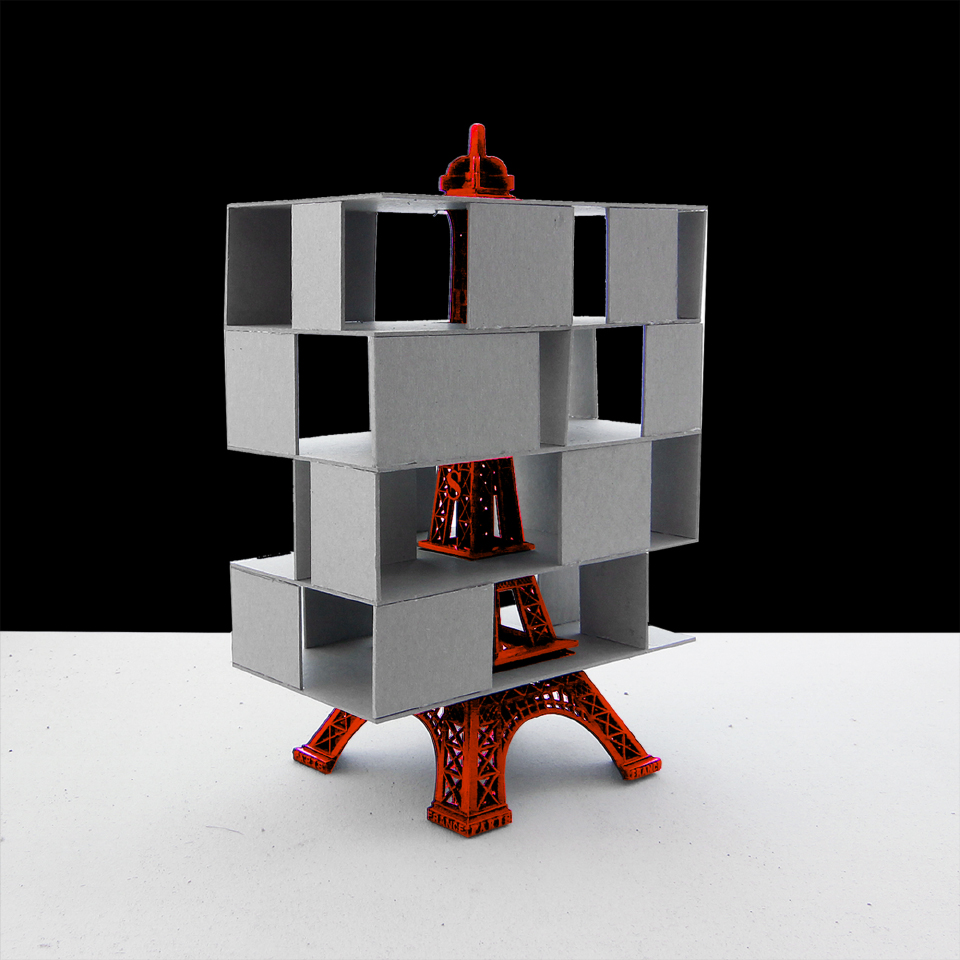该项目是一栋公寓楼,由34套住宅组成,基地周围仍有许多日本传统住宅,500米内还有文化设施、购物区、大学、公共办公区和公园。为了在如此多样又相互影响的环境中建造公寓楼,建筑师整合了34种不同类型的住宅,满足了居民不同的生活方式。建筑师在城市化背景下重建集体住宅的内外空间关系,这种设计贯穿内外,其中,围墙、楼板、结构框架起到分隔作用,阳台起到过渡作用。
HOUSING COMPLEX NIIGATA III is an apartment building composed of 34 dwellings. There are a number of traditional Japanese houses still exist on neighbouring plots, and cultural facilities, shopping districts, universities, public offices and a park within 500m. In order to integrate an apartment block in a location where various programs interact with each other, we considered an aggregate composed of 34 types of dwelling that cater to differing lifestyles.We tried to reconstruct the relationship between inside and outside spaces in collective housing in an urbanized context. We designed from inside to outside and also outside to inside, considering the separating role of the perimeter wall, the slab and structural frame, and the use of a terrace as a transition zone.
▼建筑与街道,the building and the street © Naomichi Sode

建筑师想通过该项目的建造传达人的尺度和城市的密度,并使它们在视觉上产生连贯性。为了实现这个目标,每栋住宅占据2至3层的空间,与附近旧有联排木屋的比例相似。外围护结构使用细板,符合人体尺度。同时,该住宅综合体有10层楼,其结构框架符合城市尺度。这两种矛盾的尺度体现在居住空间和城市景观中,房间内的柱子和梁的尺度使居民联想到附近的传统住宅,提醒他们与集体的联系。近年来,该地区推进重建工作,老建筑逐渐消失,建筑师将该项目作为范例,继承城市历史风貌的片段,向未来传递过去的记忆。
Through the construction of the building we wanted to express both a human scale and the density of the city, whilst maintaining visual coherence. To achieve this, dwellings were grouped in 2-3 storey volumes with a similar proportion to the old wooden row houses nearby. The resulting expression of the thin outer envelope of walls and slabs therefore provides a human scale. Simultaneously the structural frame adopts an urban scale comprising a 10-storey housing complex. The two contradictory scales are demonstrated in both the residential space and the cityscape. The urban scale of columns and beams within rooms give residents an awareness of the neighbouring dwellings, reminding them of their connection to the collective.In recent years, with rebuilding progressing and old buildings in this area being lost, we envisage this structure as archival architecture, inheriting fragments of the historical cityscape and expressing memories in the future.
▼外围护结构的薄墙和薄板符合人体尺度,10层楼的高度符合城市尺度 © Naomichi Sode the thin outer envelope of walls and slabs adopting a human scale,a 10-storey housing complex adopting an urban scale
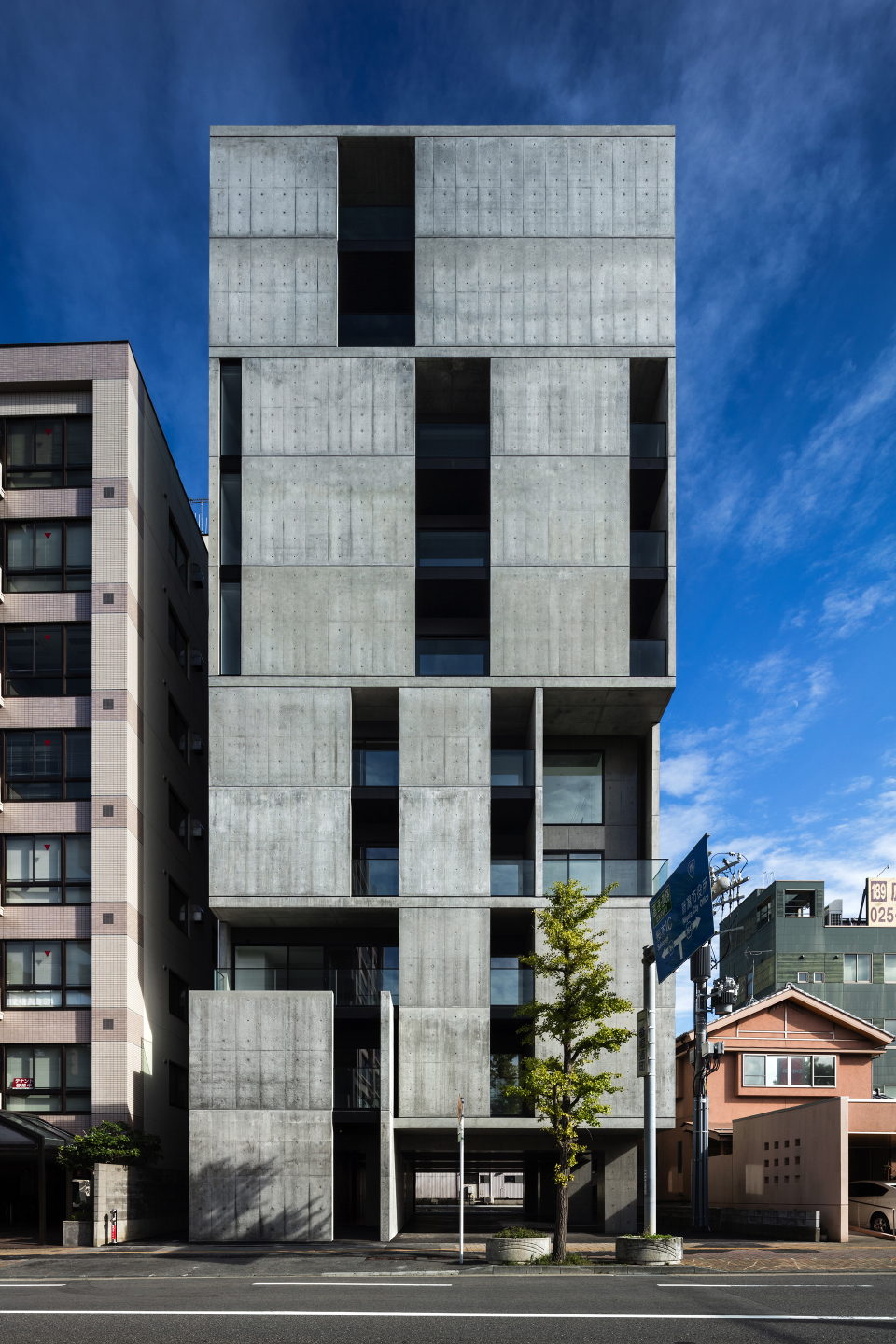
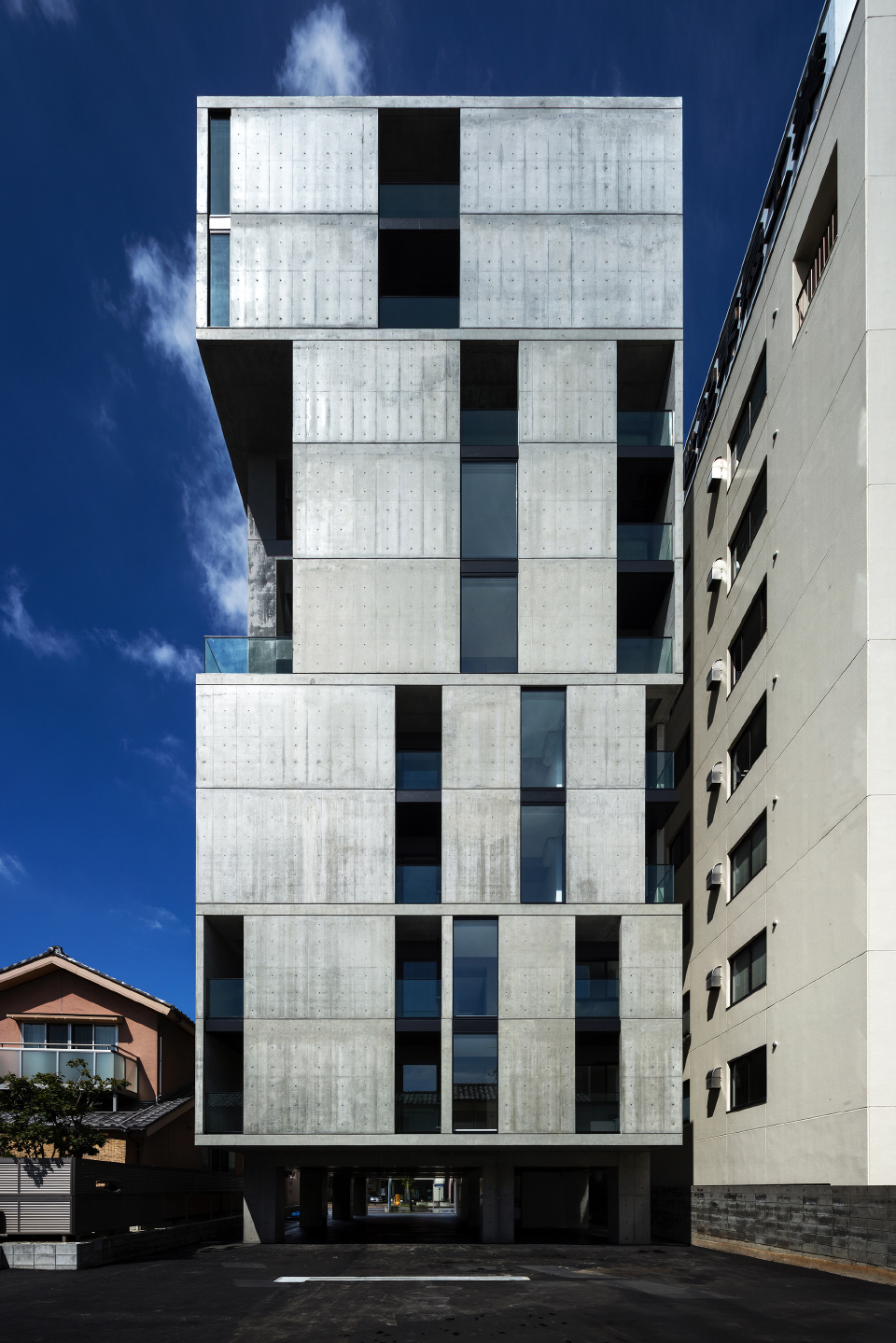
该项目的框架坚硬笔直,跨度精简,从而满足建立一栋10层住宅楼的要求。新潟是一个省会城市,属于典型的汽车导向型社会,又常受大雪天气的影响,因此建筑师将一层架空,尽可能提供更多停车隔间。建筑跨度取决于停车隔间的模数,其框架结构使得楼板、外围护结构和边界墙能够完全自由布置。外围护结构的墙体堆叠至2到3层后,与楼板的悬挑部分刚性连接,减少了偏移,加固了受静荷载的楼板;同时楼板横向支撑外围护结构,起到抗震作用。
The structure is a rigid frame with an economic span that is required to establish a 10-storey housing complex. Niigata, a provincial city, is a typical car-oriented society and is subjected to heavy snowfall so we arranged piloti on the ground floor to enable as many parking bays as possible. The grid span is based on the module of a parking bay. The structural frame as proposed enables the slab, outer envelope and the boundary walls to be completely freely designed in plan. The outer envelope and the cantilevered slabs are rigidly joined. By stacking 2 to 3-storey walls, it reduces the deflection effect on the cantilever slab and instead produces a long-term reinforcing effect. For long-term loads, the outer envelope reinforces the slabs, and the slab laterally supports the outer envelope against seismic forces.
▼外围护结构的墙体堆叠至2到3层,减少偏移,the outer envelope stacking 2 to 3-storey walls, it reduces the deflection effect © Naomichi Sode
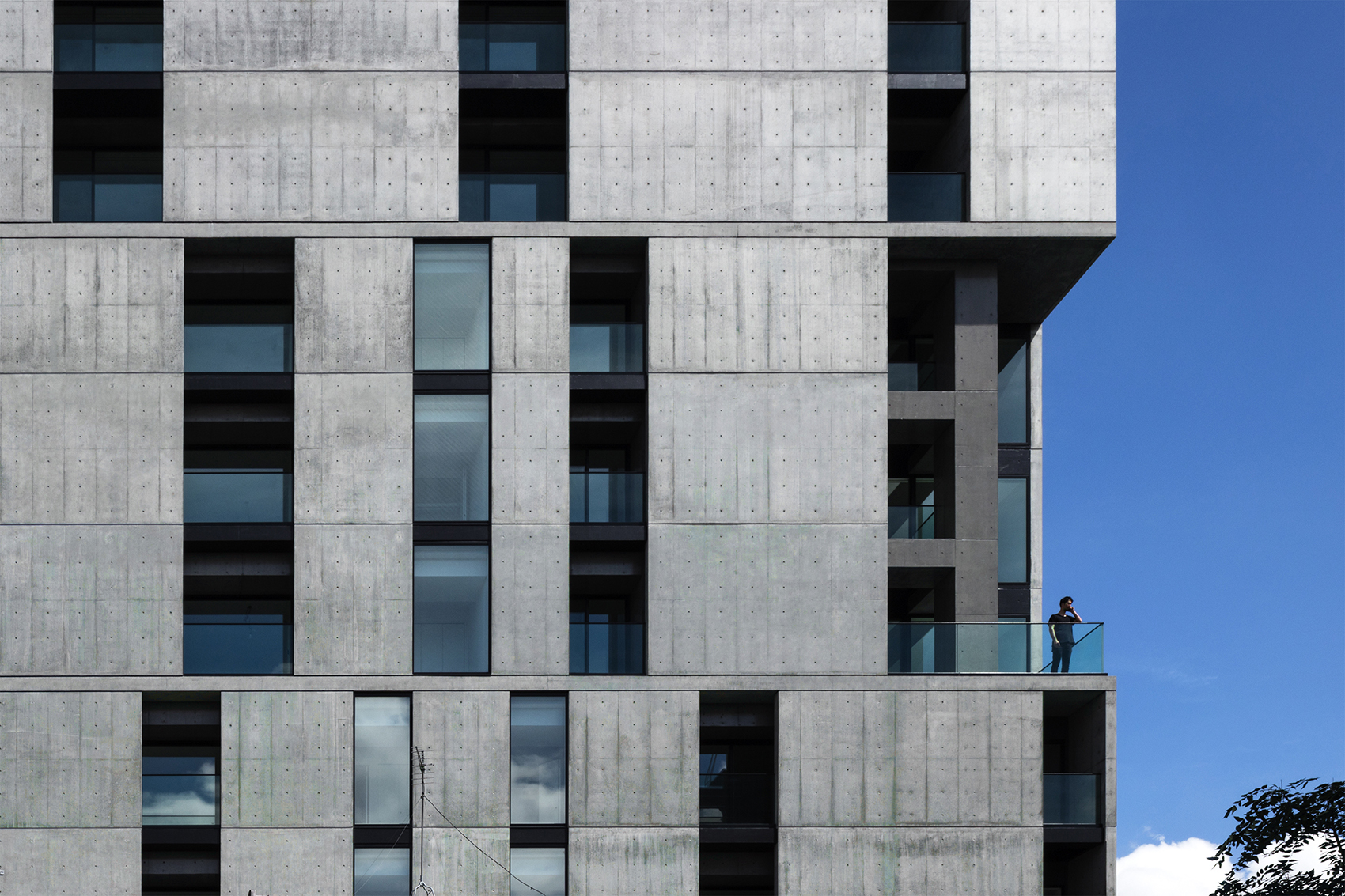
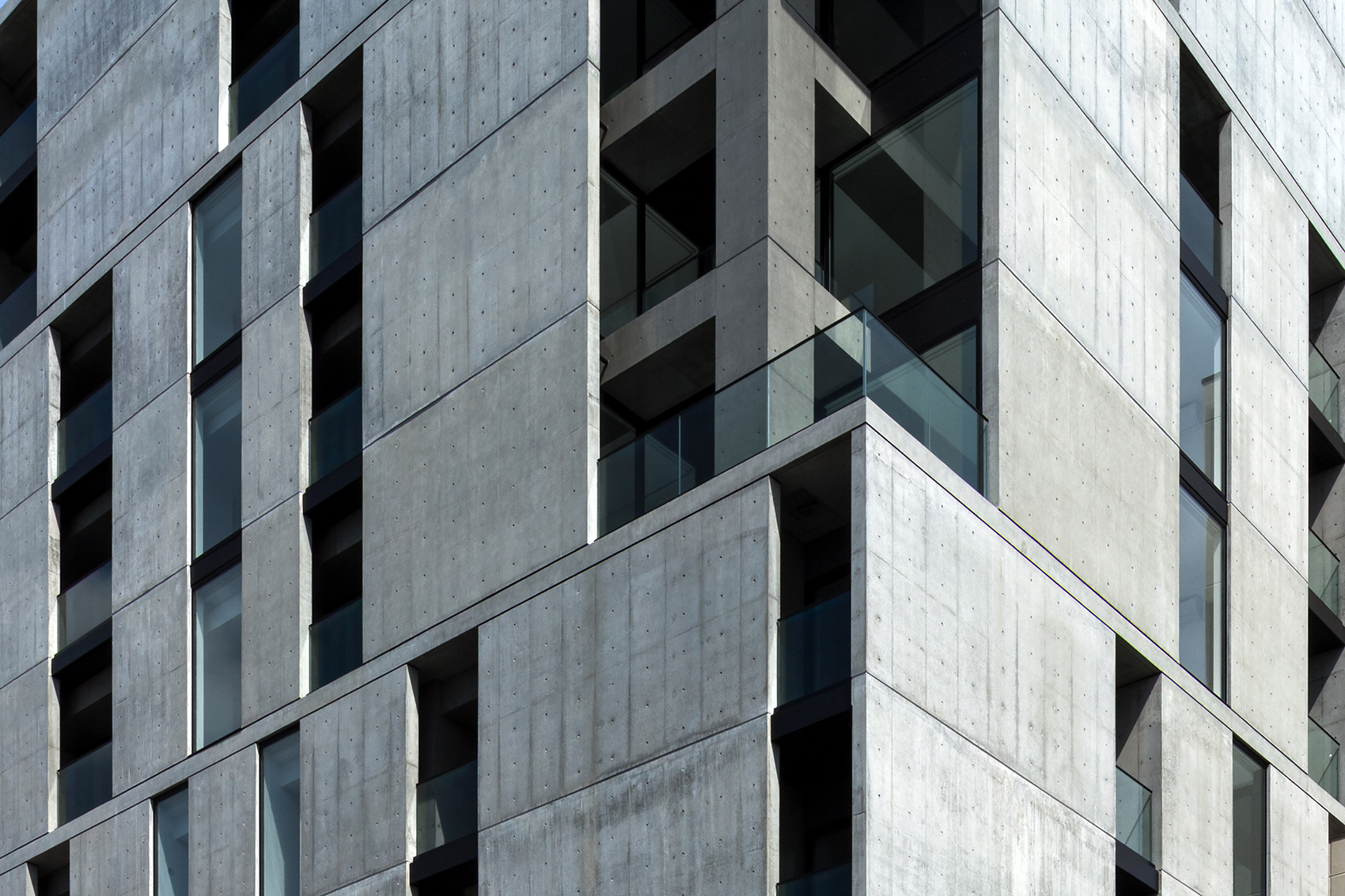
外围护结构作为内外空间的过渡区域,位于阳台外侧,控制内外的距离感。在外立面设置开口,不仅防止内外视线直接相连,而且分隔了住宅与城市,保护了居民的隐私。框架和楼板的布置使居民可以柔和地划分内部空间,实现内外空间的过渡。
Place the outer envelope walls as a buffer zone on the outside of the terrace, and control the feeling of the distance between the inside and the outside.Arrange openings in the external envelope to prevent a direct line of sight from inside to outside and vice versa, this provides privacy and separation between dwellings and the city.The relationship between the columns of the structural frame and the slab (in plan) allows the internal space to be divided softly, causing a gradual spatial change from the inside to the outside.
▼阳台起到过渡作用,the terrace playing a transitional role © Naomichi Sode / Studio Takuya Hosokai
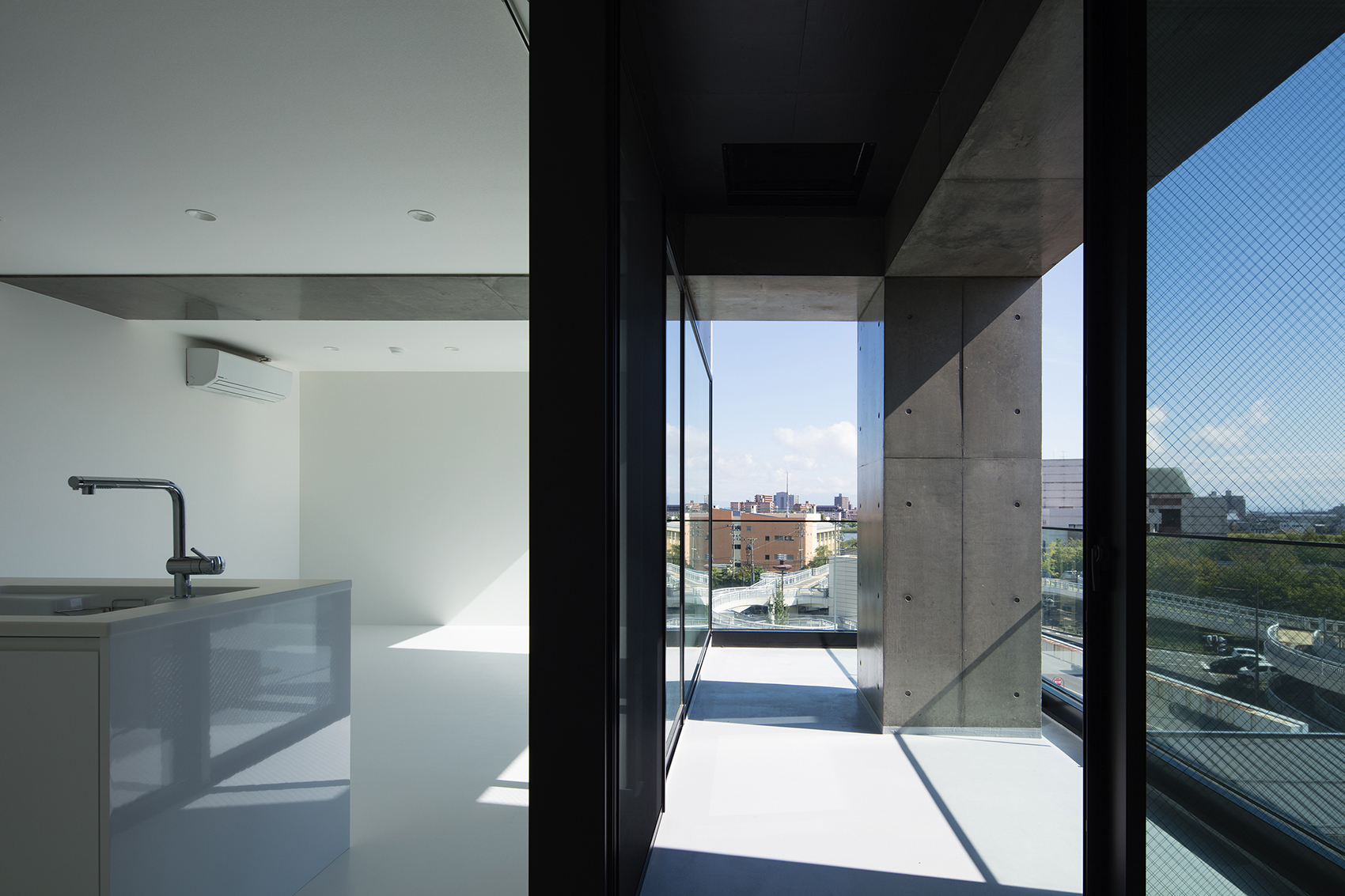
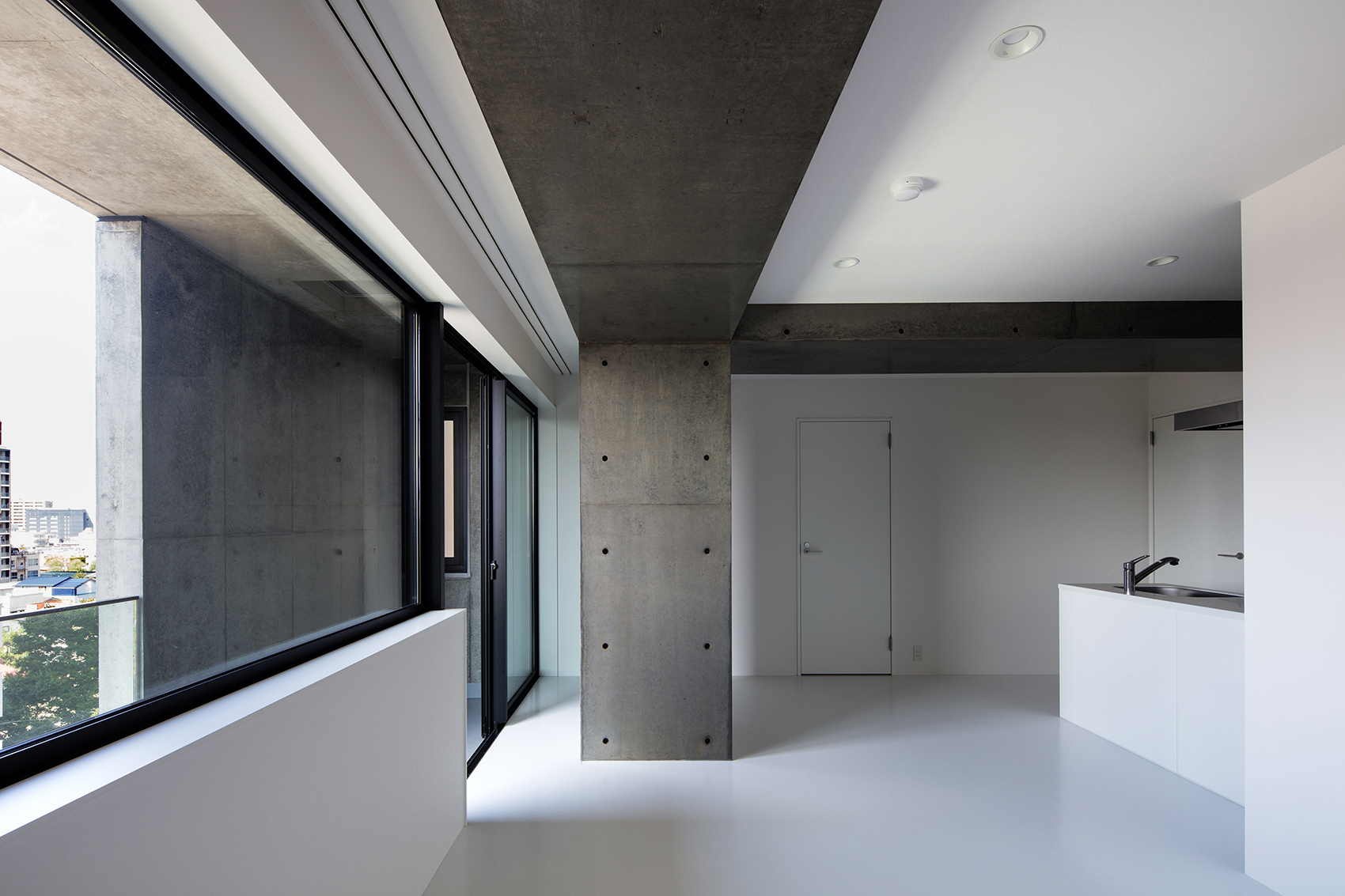
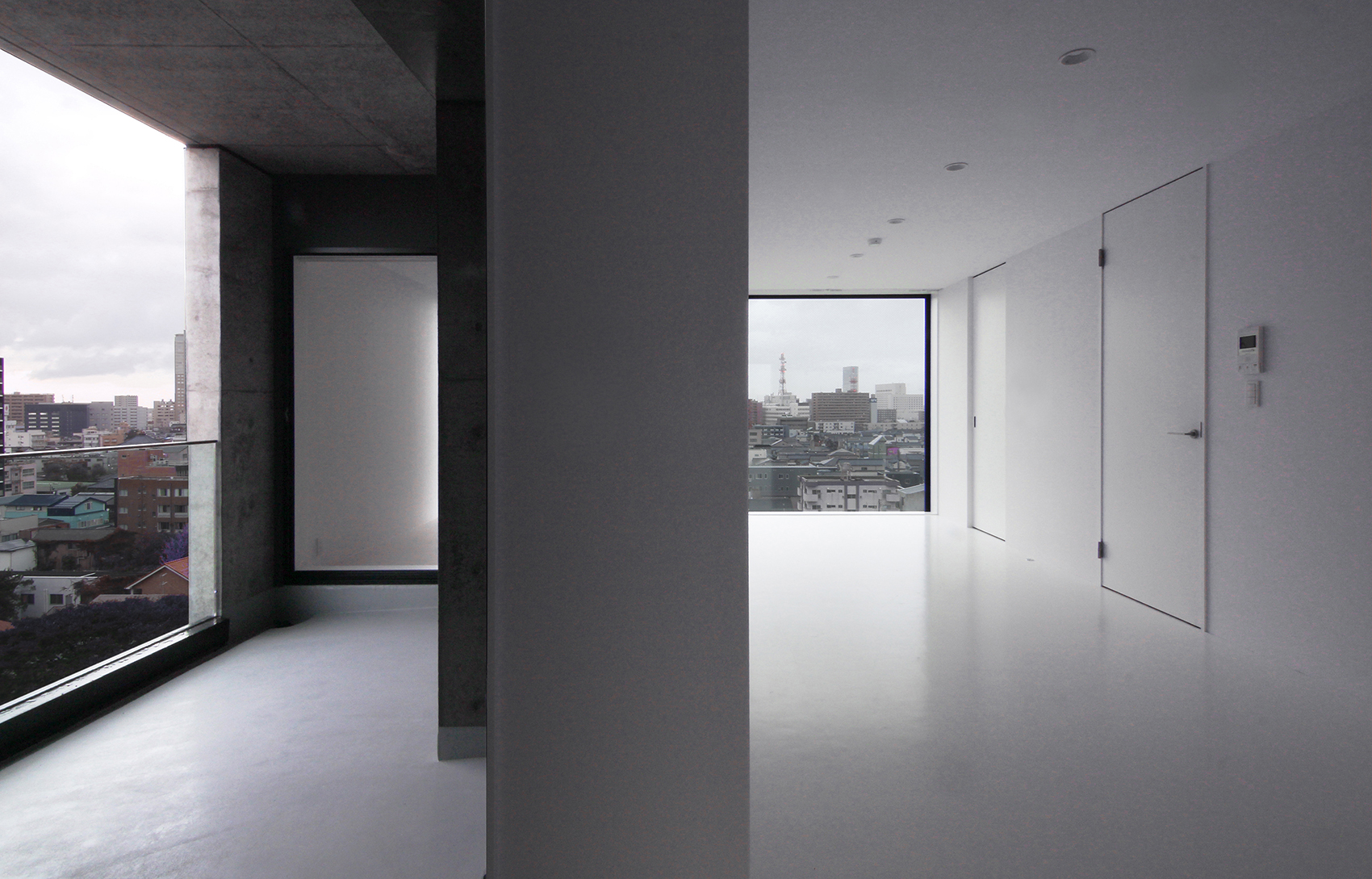
▼内部空间可以自由布置,the interior space can be arranged freely © Naomichi Sode
